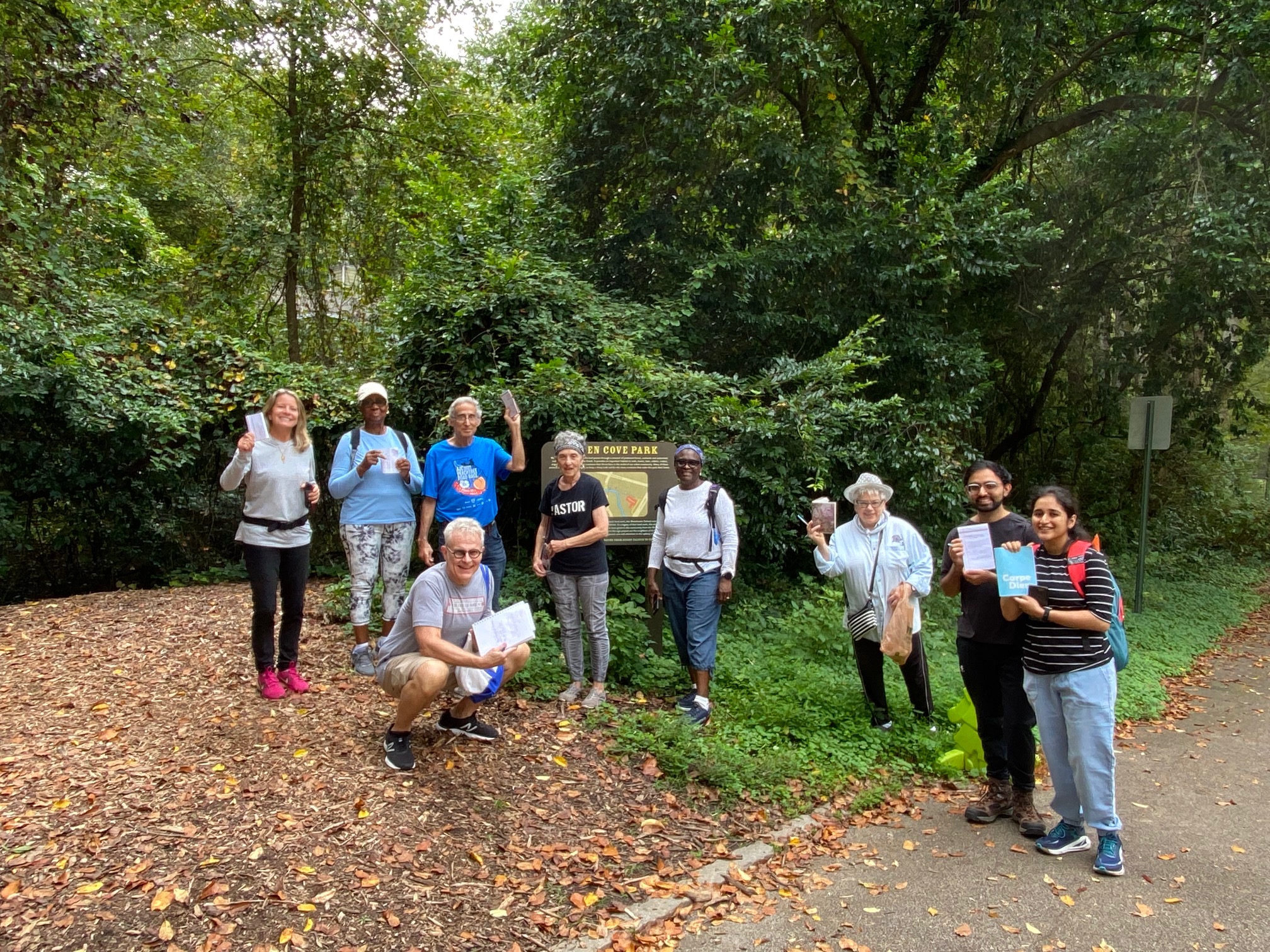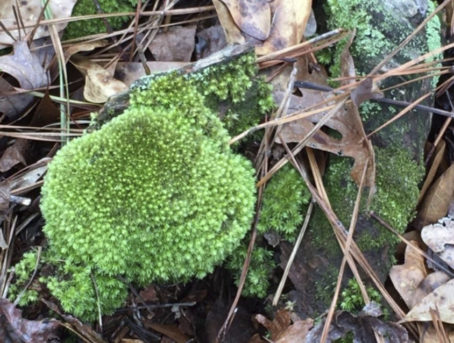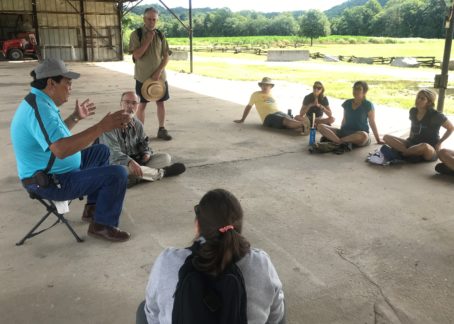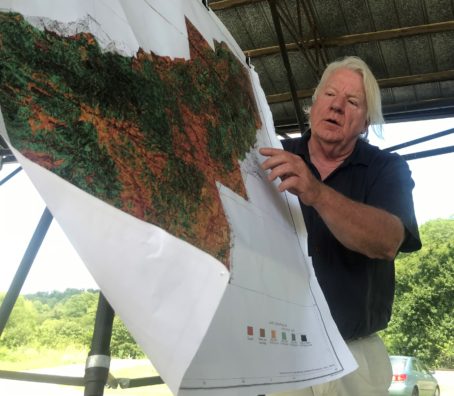Winter Wonder: Debra’s Forest 2024
February 27, 2024
The stoic, barren presence of the Winter Forest presents a unique opportunity for admiration and reflection. The trees stand tall with dignity. Though leafless, they accept nothing and reject nothing. They are bound to the earth, and their presence is a metaphor for stillness and peace. Sooner or later, they will succumb to the cycle of life and death and will pass away, but it is during the Winter season that the trees show their resilience and their strength….by simply being.

Each day I walk among the quietude of the Winter tree canopy. My feet have worn a path upon the fallen leaves. The sound of the crumbling leaf structures is wonderful. The leaves return to the earth as a blessing to the soil. The soil is the floor upon which the forest emerges triumphant! It is during the Winter season that I appreciate most the benefit of my daily walks. Walking: it is a simple exercise from which I gain the simple pleasures of quietude and grace. The forest benefits from my gentle impact. Like the footsteps of a deer or the scurrying footprints of a hundred squirrels, may my impact support the natural order of an infrastructure that has been in place for hundreds (if not thousands) of years before I existed.
The Winter Forest is a magic show. It’s native plants and leaf structures have disappeared, only to reappear in a sequential dance that has gone on for millennia. With me or without me, the forest–even in its Winter slumber is already fulfilled. Within the code of its DNA is the spark of creation. When the cosmic signal is rendered, the Winter Forest is duty bound for creativity and growth. Each season it slumbers, and each season it reawakens. It lets me know that the world is a continuum–it is everlasting. Like the Winter Forest, the world’s potential for peace and stability is possible.

Debra’s Forest:
“This small plot of earth expands my awareness and understanding, especially during the winter season.”
— Debra B. Pearson
_ _ _ _ _ _ _ _ _ _ _

Debra B. Pearson, PhD, stewards a 1-acre native forest and bio-reserve at her home near College Park, Georgia. She is recently retired from a 30-year Language Arts class room teaching career in Atlanta Public Schools, predominantly Frederick Douglass High School. She is also an EcoAddendum Board Member since 2016.


 On day one, I invited the children to walk with me into the forest to further investigate. To my great delight, many indicator plants were present: Solomon Seal, Horse Balm. Wild Ginger, Lion’s Foot, Solomon Plume, and then I beheld…as Eco A director, Kathryn Kolb informed, the ‘smoking gun’ of an old growth forest remnant, the three-leaf indicator plant named Trillium. I startled the children when I screamed with delight upon finding it! And that’s when the teaching idea was hatched. I decided that being a nanny for the children had a much larger purpose. I would educate the young ones about the glorious old growth forest remnant that existed in their backyard.
On day one, I invited the children to walk with me into the forest to further investigate. To my great delight, many indicator plants were present: Solomon Seal, Horse Balm. Wild Ginger, Lion’s Foot, Solomon Plume, and then I beheld…as Eco A director, Kathryn Kolb informed, the ‘smoking gun’ of an old growth forest remnant, the three-leaf indicator plant named Trillium. I startled the children when I screamed with delight upon finding it! And that’s when the teaching idea was hatched. I decided that being a nanny for the children had a much larger purpose. I would educate the young ones about the glorious old growth forest remnant that existed in their backyard. The first task that I gave the children was that of trail builders. The children and I collected felled branches and limbs and created a narrow series of trails that interlocked around and throughout the forest. It took a couple of days to complete, but the children were super excited because for the first time, they had access to their backyard and could run and play in it. I encouraged the children to walk the trails each day, and almost immediately the trail had the crushed leaf markings of repeated human footsteps. The trail building worked around the existing plants. I used each trail detour as a teaching moment: “Nope, the trail can’t continue this way; there’s Horse Balm growing here” or “There’s Wild Ginger there.” “Yes, the trail must go this way because a patch of Solomon Seal is growing a few footsteps away.” It was truly a rush to see the children’s enthusiasm and the extent to which they could remember and identify each plant species. They all adopted and fiercely protected the one Trillium forest resident, reminding each other to “be careful” as they ran through the trail where it lived.
The first task that I gave the children was that of trail builders. The children and I collected felled branches and limbs and created a narrow series of trails that interlocked around and throughout the forest. It took a couple of days to complete, but the children were super excited because for the first time, they had access to their backyard and could run and play in it. I encouraged the children to walk the trails each day, and almost immediately the trail had the crushed leaf markings of repeated human footsteps. The trail building worked around the existing plants. I used each trail detour as a teaching moment: “Nope, the trail can’t continue this way; there’s Horse Balm growing here” or “There’s Wild Ginger there.” “Yes, the trail must go this way because a patch of Solomon Seal is growing a few footsteps away.” It was truly a rush to see the children’s enthusiasm and the extent to which they could remember and identify each plant species. They all adopted and fiercely protected the one Trillium forest resident, reminding each other to “be careful” as they ran through the trail where it lived. Each day the children focused on a different tree or plant in their biodiverse backyard classroom. By the end of the third week each child had identified, drawn, and colored the leaf, bark, flower or fruit samples of almost a dozen native trees. Also, they logged into their notebooks the shapes of ten indicator plants that grew in the forest. And from there…the curriculum morphed. In a forest context the children wrote Haiku poems, learned sentence patterns, developed a vocabulary list, and wrote and shared stories.
Each day the children focused on a different tree or plant in their biodiverse backyard classroom. By the end of the third week each child had identified, drawn, and colored the leaf, bark, flower or fruit samples of almost a dozen native trees. Also, they logged into their notebooks the shapes of ten indicator plants that grew in the forest. And from there…the curriculum morphed. In a forest context the children wrote Haiku poems, learned sentence patterns, developed a vocabulary list, and wrote and shared stories. My nanny/forest teaching experience fed my need to educate. However, over the course of four weeks, teacher and students became one and the same. The children are now the teachers of their outdoor classroom. It is my hope that their connection to the forest has been forever baked in the fire of their experiences, and that they become stewards who will nurture and protect the forest forever.
My nanny/forest teaching experience fed my need to educate. However, over the course of four weeks, teacher and students became one and the same. The children are now the teachers of their outdoor classroom. It is my hope that their connection to the forest has been forever baked in the fire of their experiences, and that they become stewards who will nurture and protect the forest forever.

 It seemed a no-brainer to major in human biology in college, after a thoroughly exciting and fun experience in high school exploring natural science courses. Going on to study medicine felt the proper course for things, as well as pursuing a career that involves continuous learning about things that affect our lives.
It seemed a no-brainer to major in human biology in college, after a thoroughly exciting and fun experience in high school exploring natural science courses. Going on to study medicine felt the proper course for things, as well as pursuing a career that involves continuous learning about things that affect our lives. When I first walked the lot, it was mid-afternoon on a sunny summer day, sunlight was filtering through the tree canopy, and within minutes, as the property owner, the builder, and I cut a path with machetes through the thick undergrowth that began right at the roadside, I knew this was the place for my sanctuary – a feeling of serenity engulfed me, and the vision for this place was spawned.
When I first walked the lot, it was mid-afternoon on a sunny summer day, sunlight was filtering through the tree canopy, and within minutes, as the property owner, the builder, and I cut a path with machetes through the thick undergrowth that began right at the roadside, I knew this was the place for my sanctuary – a feeling of serenity engulfed me, and the vision for this place was spawned. The first time I waded across the creek (
The first time I waded across the creek ( Natural stone benches were installed in key locations along the walking path. The benches allow expansive views of the forest, resting places for weary hikers, and feeding pedestals for squirrels and other animals to enjoy. The views from these locations are all so different at various times of day and as the seasons morph from spring to summer, fall, and winter. The Nature Walk is well-established now after my use for some years and use by animals (who love it), along with yearly seasonal droppings from the trees, which has created abundant bedding on the walking path.
Natural stone benches were installed in key locations along the walking path. The benches allow expansive views of the forest, resting places for weary hikers, and feeding pedestals for squirrels and other animals to enjoy. The views from these locations are all so different at various times of day and as the seasons morph from spring to summer, fall, and winter. The Nature Walk is well-established now after my use for some years and use by animals (who love it), along with yearly seasonal droppings from the trees, which has created abundant bedding on the walking path.




 Since my forest “tragedy,”
Since my forest “tragedy,”









